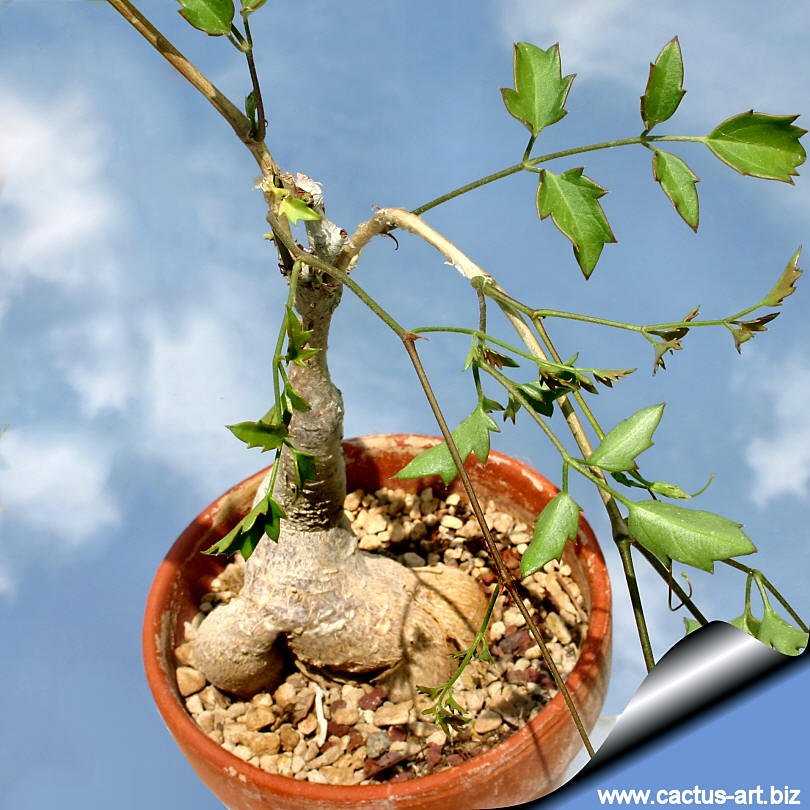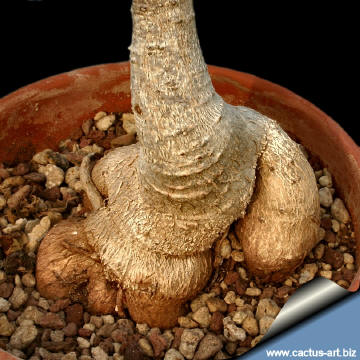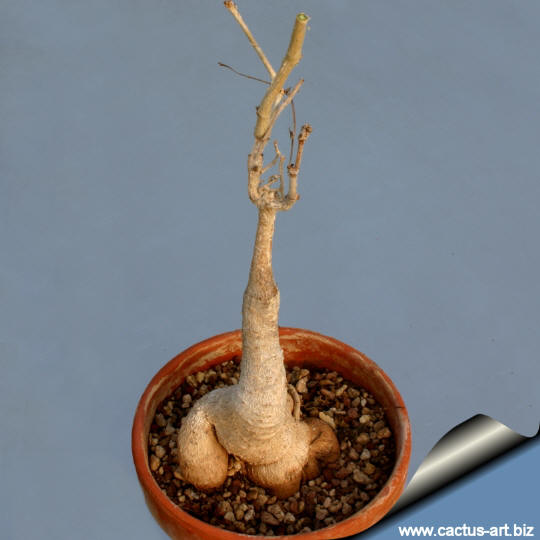|
|
|

Cyphostemma elephantopus
One of the most spectacular of the genus with both a discoid tuber
and pachycaul stem with age.
Fanciers of succulent plants consider cyphostemmas to be eminently
desirable
|
 |
 |
|
Cultivation: Grows in any rich, very well-drained, preferably stony soil with some water and lots of sun
throughout the year. It is suited to greenhouse culture but does well
out of doors in a Mediterranean climate. It doesn't like wet winter
but will survive. Water plentifully in summer but Keep rather dry in
winter at a minimum of 12°C. Mature plants are hardy to 2C.
Avoid
any freezing temperatures. Exposure: light shade.
For soil in full sun throughout the year.
Propagation: Propagate usually from seeds that must be prepared,
aged and scarified (and even then germination is uncertain), or by
cuttings.
Advertising |
|
|
|
|
|
|
Family: Vitaceae (Ampelidaceae)
Scientific name: Cyphostemma elephantopus
Descoings 1963
Origin: Madagascar (Toliara)
Common Name: Elephant-foot Grape Tree

C. elephantopus in winter without leaves.
|
|
Description: Weird but ornamental herbaceous
perennial caudiciform vine, with massive, above-ground flask-like caudex
with a tapering shape, a bit like an elephant’s tusk.
Caudex: This species has a very broad, fat, underground root
system. This complex root system gradually tapers into a thickened,
conical or disc-shaped caudex that can grow up to 60/200cm across. The
caudex is woody, smooth, dark brown with concentric rings and looks like
a big brown rock. In habitat this underground storage organ can attain
surprisingly large dimensions with a water reservoir capacity up to
100-200 (or more) litres.
Stem (vines): The rambling vines are succulent and reach about
the height of two meters in cultivation (but in habitat they can reach
the length of more than 20 m.)
Leaves: Fleshy, serrated (tri-lobed) and deciduous.
Flower: Yellowish-green to glaucous green in a loose
inflorescence.
|
|
|
|

 |
|